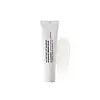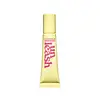What's inside
What's inside
 Key Ingredients
Key Ingredients

 Benefits
Benefits

 Concerns
Concerns

 Ingredients Side-by-side
Ingredients Side-by-side

Bis-Diglyceryl Polyacyladipate-2
EmollientPhytosteryl/Isostearyl/Cetyl/Stearyl/Behenyl Dimer Dilinoleate
Skin ConditioningPolyglyceryl-2 Isostearate/Dimer Dilinoleate Copolymer
EmollientButyrospermum Parkii Butter
Skin ConditioningDiisostearyl Malate
EmollientPolyisobutene
Polyglyceryl-3 Diisostearate
EmulsifyingDicaprylyl Carbonate
EmollientPolyglyceryl-2 Triisostearate
EmulsifyingMicrocrystalline Wax
Emulsion StabilisingPolyglyceryl-10 Decaisostearate
EmollientCeresin
Emulsion StabilisingHydrogenated Lecithin
EmulsifyingSilica Dimethyl Silylate
EmollientSynthetic Wax
AbrasiveSorbitan Oleate
EmulsifyingSorbitan Olivate
EmulsifyingTocopherol
AntioxidantPanthenol
Skin ConditioningWater
Skin ConditioningCeramide NP
Skin ConditioningDipropylene Glycol
HumectantButylene Glycol
HumectantGlyceryl Stearate
EmollientGlycerin
HumectantCeramide As
Skin ConditioningCeramide AP
Skin ConditioningCholesterol
EmollientCeramide Ns
Skin ConditioningCeramide Ng
Skin Conditioning1,2-Hexanediol
Skin ConditioningCaprylyl Glycol
EmollientTripeptide-1
Skin ConditioningAcetyl Hexapeptide-8
HumectantCopper Tripeptide-1
Skin ConditioningPalmitoyl Pentapeptide-4
Skin ConditioningHexapeptide-9
Skin ConditioningCeramide EOP
Skin ConditioningDehydroacetic Acid
PreservativeBis-Diglyceryl Polyacyladipate-2, Phytosteryl/Isostearyl/Cetyl/Stearyl/Behenyl Dimer Dilinoleate, Polyglyceryl-2 Isostearate/Dimer Dilinoleate Copolymer, Butyrospermum Parkii Butter, Diisostearyl Malate, Polyisobutene, Polyglyceryl-3 Diisostearate, Dicaprylyl Carbonate, Polyglyceryl-2 Triisostearate, Microcrystalline Wax, Polyglyceryl-10 Decaisostearate, Ceresin, Hydrogenated Lecithin, Silica Dimethyl Silylate, Synthetic Wax, Sorbitan Oleate, Sorbitan Olivate, Tocopherol, Panthenol, Water, Ceramide NP, Dipropylene Glycol, Butylene Glycol, Glyceryl Stearate, Glycerin, Ceramide As, Ceramide AP, Cholesterol, Ceramide Ns, Ceramide Ng, 1,2-Hexanediol, Caprylyl Glycol, Tripeptide-1, Acetyl Hexapeptide-8, Copper Tripeptide-1, Palmitoyl Pentapeptide-4, Hexapeptide-9, Ceramide EOP, Dehydroacetic Acid
Hydrogenated Polyisobutene
EmollientDiisostearyl Malate
EmollientSilica Dimethyl Silylate
EmollientMicrocrystalline Wax
Emulsion StabilisingSorbitan Isostearate
EmulsifyingCaprylyl Glycol
EmollientCetyl PEG/PPG-10/1 Dimethicone
EmulsifyingEthylene/Propylene Copolymer
AbrasiveParfum
MaskingTocopheryl Acetate
AntioxidantButylene/Ethylene/Styrene Copolymer
Water
Skin ConditioningAscorbic Acid
AntioxidantPolyglyceryl-2 Triisostearate
EmulsifyingCetyl Ethylhexanoate
EmollientHydrogenated Castor Oil Dimer Dilinoleate
Skin Conditioning1,2-Hexanediol
Skin ConditioningCI 77891
Cosmetic ColorantCI 15985
Cosmetic ColorantCI 42090
Cosmetic ColorantCI 15850
Cosmetic ColorantCitrus Junos Fruit Extract
Skin ConditioningAcetyl Octapeptide-3
HumectantPalmitoyl Pentapeptide-4
Skin ConditioningPalmitoyl Tetrapeptide-7
Skin ConditioningTripeptide-1
Skin ConditioningTripeptide-2
Skin ConditioningHydrogenated Polyisobutene, Diisostearyl Malate, Silica Dimethyl Silylate, Microcrystalline Wax, Sorbitan Isostearate, Caprylyl Glycol, Cetyl PEG/PPG-10/1 Dimethicone, Ethylene/Propylene Copolymer, Parfum, Tocopheryl Acetate, Butylene/Ethylene/Styrene Copolymer, Water, Ascorbic Acid, Polyglyceryl-2 Triisostearate, Cetyl Ethylhexanoate, Hydrogenated Castor Oil Dimer Dilinoleate, 1,2-Hexanediol, CI 77891, CI 15985, CI 42090, CI 15850, Citrus Junos Fruit Extract, Acetyl Octapeptide-3, Palmitoyl Pentapeptide-4, Palmitoyl Tetrapeptide-7, Tripeptide-1, Tripeptide-2
Ingredients Explained
These ingredients are found in both products.
Ingredients higher up in an ingredient list are typically present in a larger amount.
1,2-Hexanediol is a synthetic liquid and another multi-functional powerhouse.
It is a:
- Humectant, drawing moisture into the skin
- Emollient, helping to soften skin
- Solvent, dispersing and stabilizing formulas
- Preservative booster, enhancing the antimicrobial activity of other preservatives
Caprylyl Glycol is a humectant and emollient, meaning it attracts and preserves moisture.
It is a common ingredient in many products, especially those designed to hydrate skin. The primary benefits are retaining moisture, skin softening, and promoting a healthy skin barrier.
Though Caprylyl Glycol is an alcohol derived from fatty acids, it is not the kind that can dry out skin.
This ingredient is also used as a preservative to extend the life of products. It has slight antimicrobial properties.
Learn more about Caprylyl GlycolDiisostearyl Malate is an emollient and most often used in lip products. It comes from isostearyl alcohol, a fatty acid, and malic acid, an AHA.
As an emollient, Diisostearyl Malate helps create a thin film on your skin to trap moisture in. This helps keep your skin soft and smooth.
Microcrystalline Wax is created by de-oiling petroleum. It is highly refined and purified before being added to cosmetics.
Microcrystalline Wax is used to enhance the texture and create even consistency. It helps stabilize a product by preventing ingredients from separating.
You might know this ingredients as Matrixyl, a famous peptide.
Peptides are building blocks for protein. Palmitoyl Pentapeptide-4 consists of five amino acids. These amino acids include: 2 lysines, 2 threonines, and serine
This ingredients tells our body to create more collagen. Collagen is a protein that makes connective tissue. Boosting collagen production leads to a healthier skin barrier. Having a healthy skin barrier means having firm and hydrated skin.
Thus, Matrixyl may help improve the look of wrinkles.
Read more about other common types of peptides here:
Learn more about Palmitoyl Pentapeptide-4This ingredient is a form of glycerin with emulsifying and emollient properties.
As an emulsifier, this ingredient helps keep products together while adding a thick texture. The manufacturer states this ingredient has emollient properties. Emollients help keep the skin hydrated by trapping moisture in.
Polyglyceryl-2 Triisostearate is created by reacting diglycerin and isostearic acid. Due to the isostearic acid base, it may not be safe for Malassezia or fungal acne.
Learn more about Polyglyceryl-2 TriisostearateThis silica is mainly used to thicken oils and suspend particles in oils. It is not water soluble.
According to the manufacturer, it:
The manufacturer also claims this ingredient to be useful in makeup.
In lipstick formulations, this ingredient improves color payoff, reduces pigment settling, and reduces oil bleeding. This ingredient also improves the grip of powder products such as dry shampoos.
Learn more about Silica Dimethyl SilylateTripeptide-1, also known as GHK), is a small, three-amino-acid peptide made up of glycine, histidine, and lysine.
This ingredient is a signal peptide and tell your skin to start producing fresh collagen, elastin, and other key structural proteins. This helps maintain firmness and reduces the look of fine-lines/wrinkles.
GHK is also unique because is also acts as a carrier peptide. It binds to and transports copper ions (forming the complex GHK-Cu). This form has been studied for decades and is known to stimulate wound healing, boost antioxidant defenses, and promote collagen/elastin synthesis.
In-vitro studies show both GHK and GHK-CU increase fibroblast activity that enhances the production of collagen, elastin, fibronectin, and other extracellular matrix components.
Both of these compounds also help balance enzymes that control collagen breakdown.
Human studies (in-vivo) using GHK-Cu creams have reported visible improvements to skin density, elasticity, and wrinkle depth after several weeks of use.
A small clinical study also found topical collagen tripeptide improved wrinkle appearance and skin elasticity in women after four weeks.
While these results are promising, most research is based on GHK-Cu or its derivatives rather than Tripeptide-1 alone (Palmitoyl Tripeptide-1 is a famous derivative of GHK). However, the consensus still supports GHK as a potent skin-signaling molecule that can encourage regeneration and maintain youthful looking skin.
Fun fact: GHK is a naturally occurring fragment of type 1 collagen that can be found in human plasma, saliva, and urine.
Learn more about Tripeptide-1Water. It's the most common cosmetic ingredient of all. You'll usually see it at the top of ingredient lists, meaning that it makes up the largest part of the product.
So why is it so popular? Water most often acts as a solvent - this means that it helps dissolve other ingredients into the formulation.
You'll also recognize water as that liquid we all need to stay alive. If you see this, drink a glass of water. Stay hydrated!
Learn more about Water